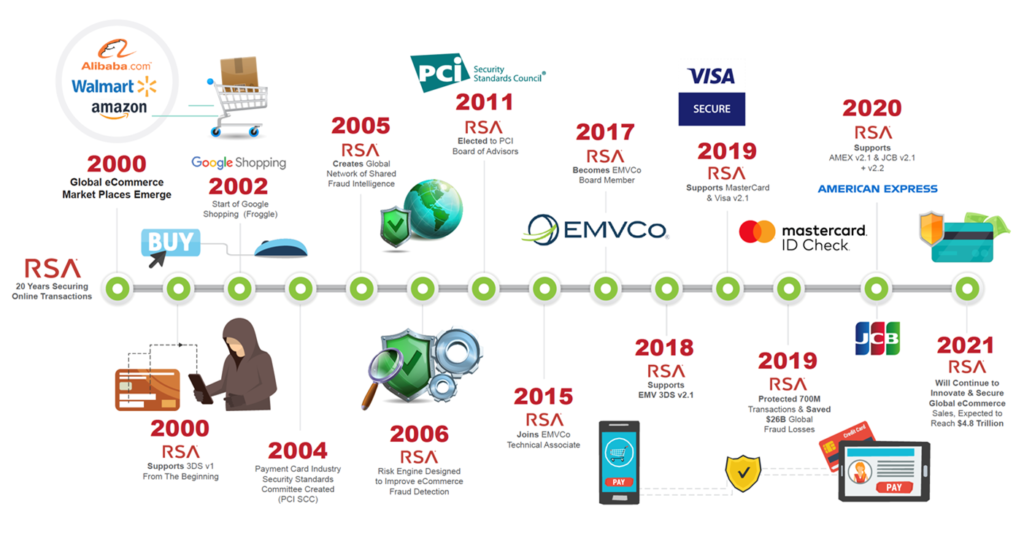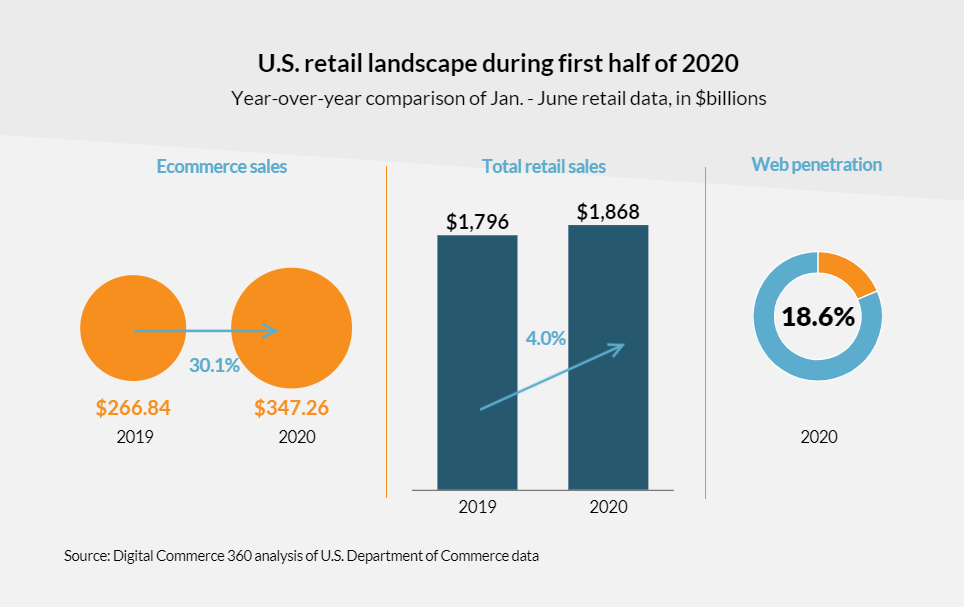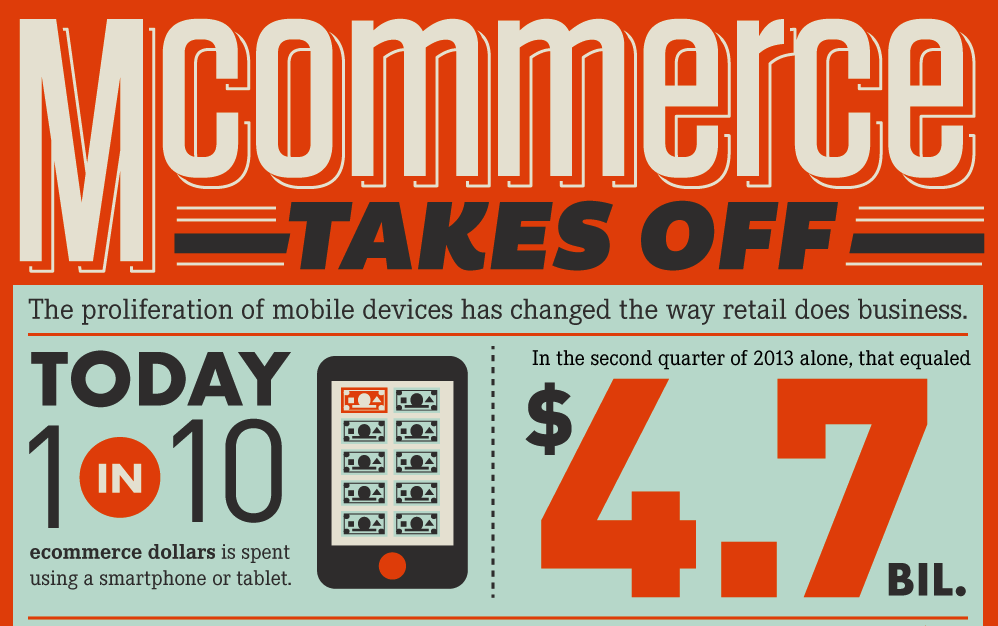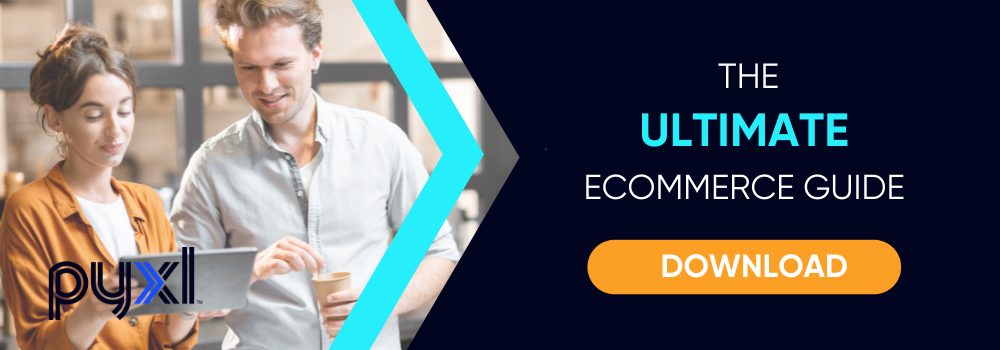As with many parts of the internet, eCommerce and the way we sell products and services online are constantly changing. While knowing terms like CPC and PPC, and other KPIs can provide insight into where and how your products should be sold online, Understanding the basics of eCommerce is key. By taking a look at the history, current trends, and future predictions of eCommerce you can learn how to sell online products and services to your target audience more efficiently.
History of eCommerce
English inventor Michael Aldrich was the first to introduce electronic shopping—a process later to be known as eCommerce. Aldrich’s system connected a modified domestic TV to a real-time transaction processing computer via a domestic telephone line. By doing so, closed information systems could be opened and shared by outside parties, therefore paving the way for modern eCommerce.

From that point forward, significant events have determined the eCommerce you see now. First, with the launch of Amazon in 1994, an eCommerce platform previously for book sales, Jeff Bezos transformed the site into one of the biggest online selling platforms for all sorts of products. In fact, in the past year, Amazon increased its profits by 200%.
Paypal made its appearance on the eCommerce stage years later as a money transfer tool. When Paypal merged with Elon Musk’s online banking company, it begin to rise in popularity as a token eCommerce purchasing platform.
Google AdWords then was introduced for eCommerce businesses to help optimize online ads for people using Google Search. Finally, online retailers started using the tool in a pay-per-click context.
Many other platforms were introduced, such as Etsy, Shopify, and BigCommerce. These websites broadened the eCommerce market and created more opportunities for small business owners to sell their products.
Now that we’ve discussed some of the notable events in eCommerce that have shaped how we view online shopping today, let’s review some of the most notable changes that we’ve seen recently.
Recent Changes to eCommerce
COVID-19
COVID-19 brought many people to their homes and moved regular purchases such as food, apparel, and entertainment online. As a result, consumers spent $791.70 billion online retailers in 2020, up 32.4% from $598.02 billion the prior year, according to Digital Commerce 360. Ecommerce and the way businesses sell products/services, including consumer buying habits have changed ever since.

Artificial Intelligence (AI) Tools
In any sector of business, AI is spreading at an alarming rate to help eCommerce businesses increase efficiency and reach customers more effectively. AI in eCommerce is booming so rapidly, a survey done by Tractica estimates that it will be worth $36.7 billion worldwide by 2025.
With Google searches and Amazon Alexa shopping, voice assistants play an essential role in eCommerce by allowing users to easily search for products and communicate with web services using only their voice commands. In addition, the technology can integrate into smartphones or intelligent speakers specifically designed for voice communication.
Additionally, there are currently chatbots designed to assist buyers in making buying decisions. The bots usually communicate with the customer through text messages or by phone calls, making it an easy platform to provide assistance to customers 24/7.
Subscriptions
The subscription business model has become the norm, from Netflix to Spotify to coffee delivery and food preparations kits. Nearly 50% of all online shoppers have a subscription, and 15% of those are subscriptions for physical goods. Subscriptions offer free or discounted shipping, unique occasion benefits, store credits, and discounts on select products.
One of the most significant subscription models is Amazon Prime. When asked to list up to five reasons they shop on Amazon, 66% of consumers cited “I can find almost anything I need.” Amazon Prime membership grew to 200 million members in June 2021, becoming the largest subscription eCommerce service to date.
Would you like more insight into how your eCommerce business can develop a successful digital strategy? Download our eCommerce Guide:
Future eCommerce Changes & Trends
We predict that B2B eCommerce sales will reach almost $1.5 billion in 2021, up 12.2% from 2012, as online business trends continue to dominate the everyday operations of B2B companies. In the future, eCommerce will face changes and trends that differ from those in the past.
Green Consumerism
With the explosive growth of eCommerce, there is a need for a more sustainable, eco-conscious alternative. Consumers demand that their products do not harm the environment. According to GWI, 60% of internet users say they’ll pay more for eco-friendly products. It’s encouraging to know that eco-friendliness matters to consumers, even those we would not expect. Millennials and older generations aren’t too far apart when saying they would buy high-priced, green products. However, those who describe themselves as price-conscious or those with low incomes will still prefer eco-friendly products.
AI Shopping
The future of eCommerce is becoming more influenced by the use of artificial intelligence. AI in online retail is contributing to an improved user experience through personalized buying experiences. By using collected and processed data, eCommerce companies can provide personalized recommendations to every customer in real-time and design a more tailored shopping experience. In online retail, AI-based customer journeys create an individual experience tailored to the interests and needs of every customer.
Rise in M-Commerce
M-Commerce involves shopping through a mobile device. As consumers become more reliant on digital devices, they are shopping online through their social media networks. Several social media sites, including Facebook, Twitter, and Pinterest, have added “buy buttons” so shoppers can make purchases without leaving the site. In addition, the one-click option allows shoppers to make purchases without re-entering their payment information by entering their card information once.

Find out what additional eCommerce trends and best practices to expect in the coming years in our blog.
Partner with Pyxl
The present and future of the way we do business is eCommerce; do not wait to start your online business today. Building and perfecting your online presence can be difficult; that’s why Pyxl is here to help. Contact Pyxl for assistance starting your eCommerce journey.
Updated: Apr 13, 2022
 Bonnie Winter
Bonnie Winter
 Kati Terzinski
Kati Terzinski Erin Murray
Erin Murray